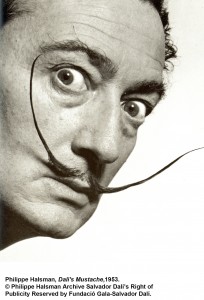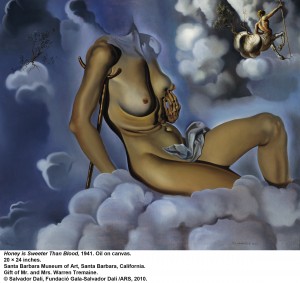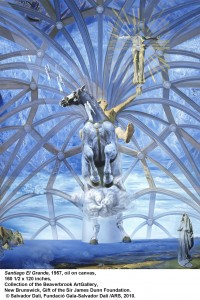Images courtesy of High Museum of Art
When you think of Salvador Dalí, what comes to mind? Could it be melting clocks or, perhaps, his elaborate handlebar mustache? While the art history books may only concentrate on Dalí’s early surrealist paintings, there is much more to Dalí than “The Persistence of Memory.”
After 1939, Dalí was shunned by surrealists and began to refer to himself as a “classic” painter. He became increasingly religious and reverted back to his Catholic roots, which became a common theme in his paintings of the 1950s and 1960s. He also experimented with new media, which included film and holographic technology.
August 7 – January 9, 2011, Atlantans will have the unprecedented opportunity to experience Dalí’s post-surrealist work for themselves. “[The High Museum of Art is] the only place on the planet whe re you can see Dalí’s late work in depth,” museum director Michael E. Shapiro boasted to a room filled with members of the press during a preview of the exhibit.
re you can see Dalí’s late work in depth,” museum director Michael E. Shapiro boasted to a room filled with members of the press during a preview of the exhibit.
Dalí: The Late Work opens with photographs from “Dalí’s Mustache” — a “preposterous” book that was a product of collaboration between Dalí and American photographer Philippe Halsman. If you opt for the audio tour, there is an option to listen to the children’s version that is narrated by the mustache itself.
Dalí’s artistic transformation to classicism is further explored through works such as “Honey is Sweeter Than Blood,” in which remnants of his surrealist work can be appreciated. The main gallery houses some of the largest paintings in the exhibit, including “Santiago El Grande,” which depicts the patron saint of Spain riding on a horse. The painting is meant to be hung high, so in order to fully appreciate it, it is suggested that you crouch down and view it from below.
Optical illusions are robust in the latter part of Dalí’s late work. Several visually perplexing paintings hang in the final viewing room, including one that is as complex as its name suggests —“Fifty Abstract Paintings Which as Seen from Two Yards Change into Three Lenins Masquerading as Chinese and as Seen from Six Yards Appear as the Head of a Royal Bengal Tiger.” Accompanying these pieces is Dalí’s collaboration with Alice Cooper which includes a hologram of the rock star. Cooper narrates this portion of the exhibit in the audio tour.
Those who have worked closely with the exhibit are confident it will not let Dalí fans and art lovers down. Guest curator and Dalí scholar Elliot King had this to say: “It is a pretty extraordinary moment to have all these paintings reunited for the first time in 50 years…this exhibit will change what people think of Dalí’s later work.”
In honor of the exhibit, the High Museum will host lectures, Dalí and surrealist film screenings and even soirees. SCAD Atlanta students will have opportunities to view the exhibit for free on the first Saturday of every month, with their student ID. Visit the High website for more information about the exhibit and its associated events.


























